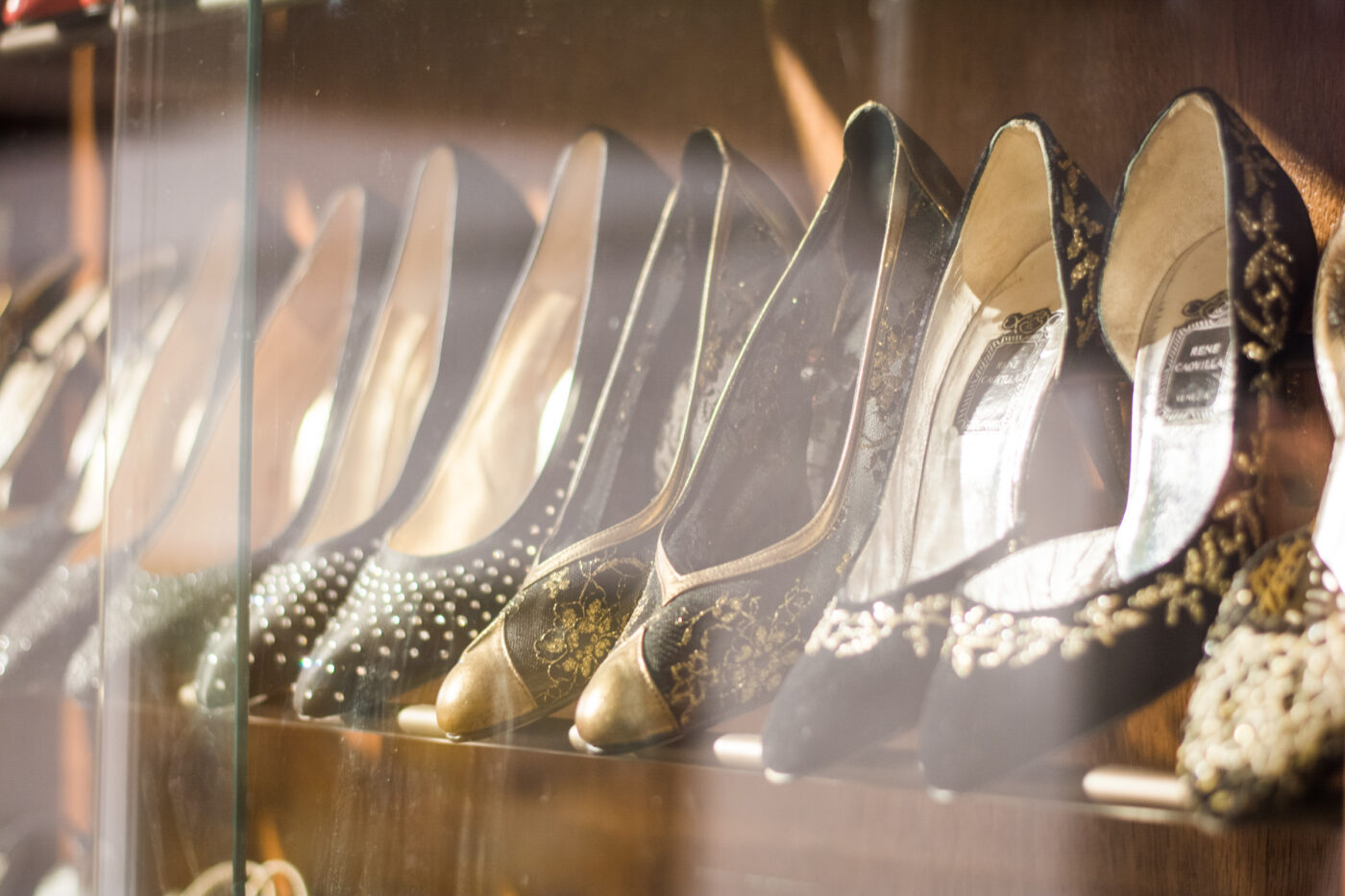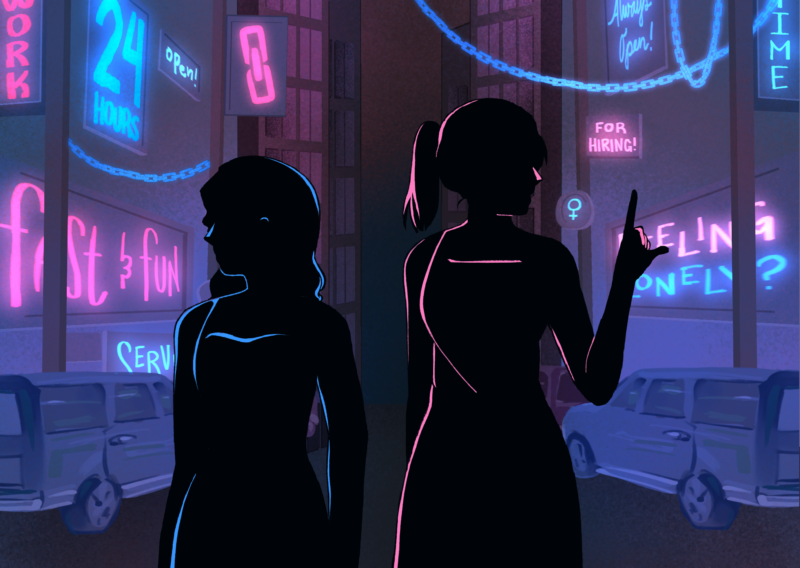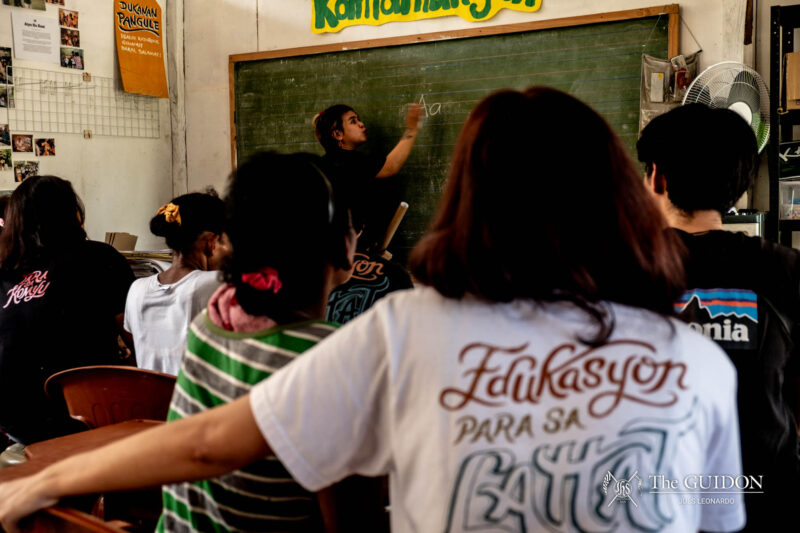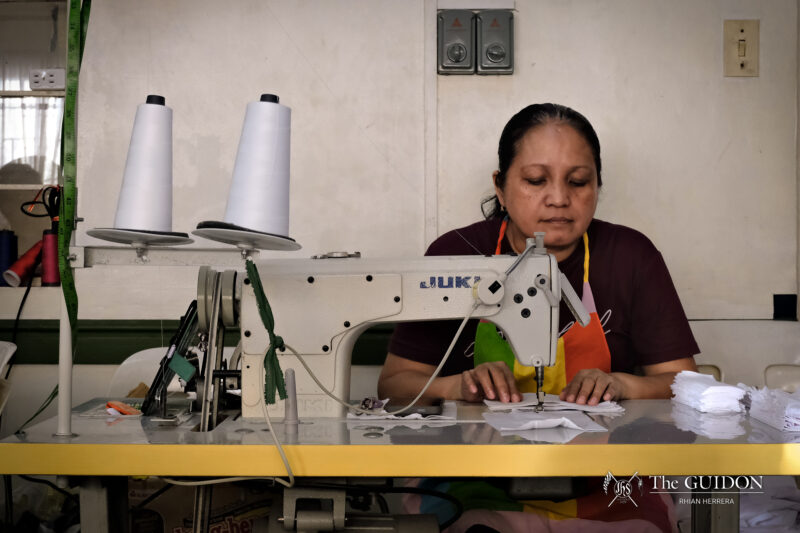When you jog around campus, there’s a chance that you would’ve crossed two cities back and forth. The hill we call home not only stands between the earth and sky but also between a fast-paced center of the metropolis and its more leisurely backyard, the quaint Marikina City.
A small city that is intimate but not cramped, Marikina is both progressive and laid-back, a relic and a revolution, where the rootedness of looking back helps citizens look forward. And a leisurely place compliments industriousness. Here, not only is the past celebrated in the present but it weaves well into the fabric of daily life.
The Marikina side of campus seems to reflect such soul. Situated here is the Loyola School of Theology, Jesuit Infirmary, Manila Observatory, and the San Jose and Arrupe seminaries. Following the 1950s, most of these were built on a rainforest that the Jesuits decided to maintain in pristine condition, sparing even the local vipers. Our E-jeeps stop where the journey begins: A huge stone staircase serving as a gateway to the city proper.
On foot for food
Despite being classified as a highly urbanized city by the Department of Interior and Local Government, the city sleeps early and a stillness akin to that of the countryside settles on its streets hours before midnight. What it lacks in skyscrapers and posh clubs, it makes up with homegrown restaurants and parkways. In seeking these out, it helps to take the jeeps and to go on foot as parking would be your enemy in visiting the city’s myriad attractions. After all, there’s no better way to take in local life-in-the-moment than by walking it from street to street.
Many of Marikina’s restaurants arose during the city’s comeback in the late ‘80s from days of crime and disorder. The place had emerged then as a walkable city that inspired the Metro Manila Development Authority to implement bike lanes around the Metro a decade after the first ones arose in Marikina in 1996.
Along with walking and biking comes parks, and the city’s most frequented parks include the river parks in Barangka and San Roque—which is reminiscent of Amorsolo paintings—and the sun-dappled, canopy-lined rotunda in Marikina Heights heralded by statues of workers from different careers. Marikina is notable for capitalizing on its natural heritage without consuming nor altering it, such as sparing the ancient trees in the Spanish-era hacienda of the Marikina Heights, Concepcion, and Nangka areas.
One can bet that each Marikeño knows someone in the food business. Each district has its specialties: Classic gotohan, panciteria, and kakanin of San Roque, fusion restaurants and specialty cafes in Lilac Street and Concepcion, and garden and backyard grills in Santo Niño’s residential area.
But not every joint run by passion is bannered with neon signs and billboards. Tucked away in the most unassuming corners of the city center or Bayan are surprisingly authentic ramen houses, holes-in-the-wall serving uniquely-crafted porridge and Visayan food joints.
Of course, all the walking one goes through helps digest all the eating. As the feet prime the stomach, shoes have been the city’s historical marker and primary product for centuries. Displays and shops sprawled around the riverbanks and traditional city center serve as living testimonies to this heritage.
The story of shoes and food arose together. Marikina resident and former Barangay Administrator Alan Bartolome shares that when shoemaking was the main occupation of the citizens, workers and shop owners would reward themselves and their families after a week’s labor. Too tired to cook, they would place hearty bulk orders of pancit and lumpia on the many eateries that still serve till today.
Soul beyond sole
Bartolome, like others of his generation, remembers a childhood of waking up to the sound of hammers pounding leather and the staccato of sewing machines—and all this situated in the aroma and crackling of frying eggs and rice. Even before the time of big local footwear names like Bristol, Otto, and Rusty Lopez, the next-door Cruzes and Rodriguezes had their stakes in the shoe market. This was the silong culture and production process with garages and first floors of family houses functioned as the assembly lines.
Family day here includes Saturday; young Bartolome would hitch with the deliveries to the warehouses in San Roque with two things to look forward to: The work to be done, and the food to be eaten after work. The oldest panciterias can be found in this area as Marikina is also known for its unique takes on well-known dishes. A notable example is the shrimp-and-cabbage okoy, commonly presented as a pancake-like torta but served here as a spring roll with less batter. Another is Marikeño goto which serves the lean beef parts in contrast to the traditional serving of innards.
Over time, families of shoe makers saw the value of such developments and the once-cabisera of the San Roque, Calumpang, and Sta. Elena area was transformed into a heritage district where 200-year-old houses, plazas, and street designs were preserved. Even the guardia civil barracks now houses the shoes of historical personalities and the past decades’ local celebrities. Leading this drive was then capitan municipal Don Laureano Guevara whose family house stands today as a heritage museum and events place that houses two restaurants.
The tides of globalization prevail, however. Cheaper raw materials from other countries now compose most of the shoes produced by Marikina’s established names as smaller silong factories were forced to close down. But with this emerged the newer restaurants in former silong houses, most notably in Lilac Street and Concepcion.
And so it goes with the life of the populace. Work, labor, and leisure fit seamlessly into each other in a city that provides its citizens with the frameworks to care for themselves. After a good meal and tour, one can’t help but fall in step with the beat of a health-conscious rhythm of the people. And vice-versa: The panciterias are favorite stopovers of weekend cyclists homebound from eastern Rizal or from a trip around the Metro.
Homemakers
From contemporary to century-old history, the lives of past Marikeños continue to flow to today’s citizens in unbroken continuity. Change then is not so much an enemy to heritage but a catalyst to evolution and integration, as seen in both recipes and renewals of old buildings. The household silong may be somewhat silent today, but the spirit of industry it once housed now breathes life to new centers of activity.
Fernando Zialcita, PhD, a full-time faculty of the Sociology and Anthropology Department, shares a distinction between the geographic concepts of “space” and “place.” The former describes a physical area, like a building or field, while the latter emerges once the people moving within it give it meaning. Spaces become places through the collective efforts—or neglect—of people.
Furthermore, heritage as conceived by anthropologists takes many forms: From natural to man-made, from the tangible, such as food and architecture, to the intangible, manifesting in customs and performed arts. All these are conditioned by and condition a people’s local memory, future vision, and present direction. The products of the citizens’ transactions with their environment affirms this spectrum of heritage in how they’ve treasured their rivers all the way to their recipes.
So what is the soul of a city? As the stories surrounding Marikina above reveal, through rice porridge and shoe soles thick and thin, this city’s living buzz is none other than each inhabitant’s contributions to the greater ecosystem of culture, customs, and practices.
Marikina is one such example of a vibrant culmination of many fields of activity. And as with all things temporal, one can only poignantly hope that through the waves of change, the creative soul of the city and its people won’t let up in dancing along the beat of the times.
With reports from Jasmine P. Ting







